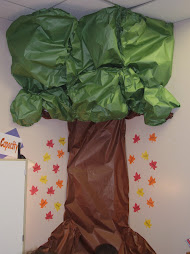Low literacy is strongly related to crime. 70% of prisoners fall into the lowest two levels of reading proficiency (National Institute for Literacy, 1998).
Low literacy is strongly related to unemployment. More than 20% of adults read as or below a fifth grade level – far below the level needed to earn a living wage.
75% of today’s jobs require at least a ninth-grade reading level (National Institute for Literacy, 1998)
Low literacy is strongly related to poverty. 43% of those with the lowest literacy skills live in poverty. (National Institute for Literacy, 1998)
Close to 37 million people live below the federal poverty level in America, and the majority of these are women and children (1997)
In 1997, 47% of Philadelphia’s homeless were families with children who lack sufficient reading skills; 10,340 homeless children were deprived of good reading practice. (Office of Housing and Community Development)
The adult illiteracy rate in United States is 38.4
The male adult illiteracy rates is 26.1%
The female adult illiteracy rates is 50.0%
For every 1,000 people in the United States, there are:
2093 radios
805 televisions
325 personal computers
218 newspapers
Of the Gross National Product, only 5.3% is spent on public education. (2000)
More than 4 in 10 preschoolers, 5 in 10 toddlers, and 6 in 10 babies are not read to regularly. (1998)
40% of American children have difficulty reading or learning to read. (1999)
As many as 1 in 5 children will manifest a significant reading disability. (1992)
75% of kids who had oral language difficulty at age 3 will have reading difficulties in the 3rd grade. (1999)
A large survey of kindergarten teachers reported that 35 percent of children arrive at school unprepared to learn. Children who lack reading readiness are more likely to develop reading problems when formal schooling begins. (1991)
A startling 88% of children who have difficulty reading at the end of the first grade display similar difficulties at the end of fourth grade. (1988)
In our highest poverty public schools, a whopping 68 percent of fourth-graders fail to reach the Basic level of achievement. Only 1 in 10 fourth graders at these schools can read at the Proficient level. (NAEP 1998 Reading Report Card)
In fourth grade, 64% of Blacks and 60% of Hispanics read below the Basic level, compared with 27% of Whites and 31% of Asian/Pacific Islanders. (NAEP 1998 Reading Report Card)
In 1998, 10 million American school children were considered “poor readers”. (NAEP 1998 Reading Report Card)
The percentage of children who read well has not improved substantially for more than 25 years. (NAEP 1996 Trends Report)
Three-quarters of students who are poor readers in third grade will remain poor readers in high school. (1997)
The top achieving 5% read 144 times more than the lowest achieving 5%.
(Terrence Paul, Institute for Academic Excellence).
Students in private schools spend 67% more time reading than public school students. (Terrence Paul, Institute for Academic Excellence).
The typical middle-class child enters first grade with 1,000 – 1,700 hours of one-on-one picture book reading; a child from a low-income family averages just 25 hours. (M.J.Adams, Learning to Read)
The average family in Philadelphia has one book: the phone book.
(Jane Heilman, 100 Book Challenge)
One in three children in Philadelphia schools fails first grade each year.
(Jane Heilman, 100 Book Challenge)
6 in 10 children spend a substantial part of each day in the care of someone other than a parent. (1998)
In recent years, more than 20 state legislatures have passed a flurry of new child literacy laws and budgets.
In 1998, students improved 2.99 grade levels for every school year that they read 60 minutes per day. (Terrence Paul, Institute for Academic Excellence).
Subscribe to:
Post Comments (Atom)



No comments:
Post a Comment